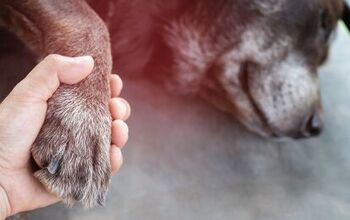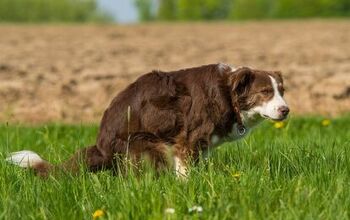How to Read Your Dog’s Poop

While it’s not as mysterious as palm-reading, it can certainly predict his future from a health and wellness standpoint. If you’re a pet owner you probably know what I’m talking about… reading your dog’s poop. And with all of us dog-walking pet parents conditioned to stoop and scoop, it’s most definitely an opportunity to get up close and personal with our little guy’s digestive system.
Right off the bat, let’s assume he is pooping. If he’s not – or his daily walks don’t seem to be as “productive” as they normally are – there’s no need to worry just yet. There could be a few simple reasons:
- Too little fiber in his diet (stuff just ain’t moving)
- Over-grooming (hair isn’t easy to pass)
- Insufficient water (always fill that bowl)
- A side-effect from medication he may be on (check the label)
- Not enough exercise (to help stimulate a poop)
But if you haven’t needed to stoop and scoop for 48 hours or longer, it could be more serious, requiring a visit to your vet to check on potential problems such as:
- Enlarged prostate gland
- Foreign objects (such as stones, plants, toys, bones… caught in his intestinal tract)
- A mass or tumor that’s causing an obstruction
- Dehydration (that can be symptomatic of an undiagnosed illness)
Related: 8 Sure-Fire Dog Constipation Home Remedies
Now, assuming all is in order from an output basis, here are the basics on how to understand what you’re scooping up into that little scented plastic bag.
The most obvious sign that something is amiss is when your pooch has diarrhea. It could be caused by something as simple as a change in diet or a food intolerance (e.g. allergic reaction or sensitivity to something he just ate) or it could be a bacterial infection, viral infection or parasites from something yucky he scarfed down when you weren’t looking.
If it’s short-term and highly watery, it may be the result of a high-stress situation such as a change of home or pet parent that is causing this dramatic physical reaction. My pooch experienced explosive diarrhea immediately after his first grooming session… and I thank my lucky stars he made it home and into our backyard before it happened.
While diarrhea in dogs isn’t uncommon, it should resolve itself within 24 hours. If your pooch returns to his normal self within a day, it’s safe to just keep an eye on his eating patterns and poop out-put to ensure he’s doing better. However, if he seems lethargic, is warm to the touch and is off his food, it’s time to call your vet. He may be suffering from a viral infection or a parasitic infection that will require treatment to prevent him from becoming seriously dehydrated. Particularly in puppies, parasites can be passed on from their mom, so an immediate resolution is needed.
Related: What is Giardia in Dogs?
If your pooch has combo poop – initially firm but ending with a soft stool – it could be what’s called small bowel diarrhea. Causes of SMB range from a food intolerance, maldigestion of his food, irritable bowel syndrome or it could be a parasite he’s picked up. Initially, it can be managed by withholding his food (not his water), for 24 – 48 hours. If it stops, begin to feed him small amounts of a bland, low-fat food spaced throughout the day. Gradually increase the portion amounts and slowly transition to his regular food. If this doesn’t work, time for a visit to your vet.
Think of mucous as a form of self-protection that your body produces when something is wrong. Remember your last head cold? It’s the same idea, but with dog poop it’s telling you that your pooch has a bowel or intestinal inflammation, not a sinus infection. As with any swelling or irritation, it can be painful, it can prevent proper digestion of his food and ultimately lead to him becoming malnourished. If this type of poop persists, play it safe and get him in to your vet. Each case is specific to the dog and needs to have a prescribed course of treatment
I experienced this with my Schnoodles when they first arrived in my home. Friends swore by crating to avoid the habitual morning messes on the living room floor. But to me, it was clear this wasn’t behavioral, but a physical issue they couldn’t control. So, I went to my vet and he put them on a top-quality, low-fat diet. Problem solved. For any one else with a dog who’s poop looks oddly greasy, you may need to revisit his kibble blend or cut out the table scrap treats. Too much fat in his diet can lead to pancreatitis – a serious ailment that can be life threatening.
Related: Let’s Talk About Pancreatitis in Dogs
Simply put, that dark, maroon looking poop is the result of blood that has been digested and then passed through your pet’s system. It means that somewhere in his upper digestive tract, something is very wrong. It could be an injury from something he shouldn’t have eaten (e.g. chicken bones or a splintered stick), it could be caused by a bleeding ulcer or it could be more serious such as a cancer. This situation won’t eventually resolve itself. You need to get him in to your vet pronto for a proper diagnosis and course of treatment.
Whether firm, soft or diarrhea, any poop that is tinged with bright red blood or blood clots indicates an open wound that is likely in his large intestine or anus. It could be caused by a rupture of his intestinal wall from something he has ingested (again, those dread chicken bones) or it might be the result of something more serious, such as a tumor or ulcer that has opened up.
If you’re about to bag your pet’s poop and discover little grains of what looks like white rice or worse, long skinny worms, it’s likely you’re looking at tapeworms. They’re parasite that can be picked up by your dog from him simply swallowing an infected flea when grooming himself. That flea carries the larvae of the tapeworm and once it settles into his digestive track, it begins to grow by burrowing into his small intestine and feeding on blood and nutrients. The adult tapeworm creates egg packets or segments that eventually break away and are passed from your dog’s body when he poops. These are what resemble grains of rice that are often moving in his poop. Diagnosis and treatment by a vet are a fairly easy process.
If your dog seems to squat, ready to relieve himself but nothing comes out, or its just small, hard stools, it’s likely that he’s constipated. It’s not unusual for dogs to get “bunged up” but it does need to be monitored. If your pup hasn’t pooped within a span of 48 hours, its time to call in the experts – your vet. The cause may be as simple as adding a little more fiber to his diet, such as mashed pumpkin (the unsweetened variety) or a wheat bran product that will help move things along. More exercise, a laxative and in some instances an enema might be prescribed. As with humans, the inability to empty his colon can cause your dog great discomfort and result in him becoming lethargic, vomiting and losing his appetite.

Sharing space with three seriously judgy Schnoodles and a feline who prefers to be left alone. #LivingMyBestLife
More by Mary Simpson























